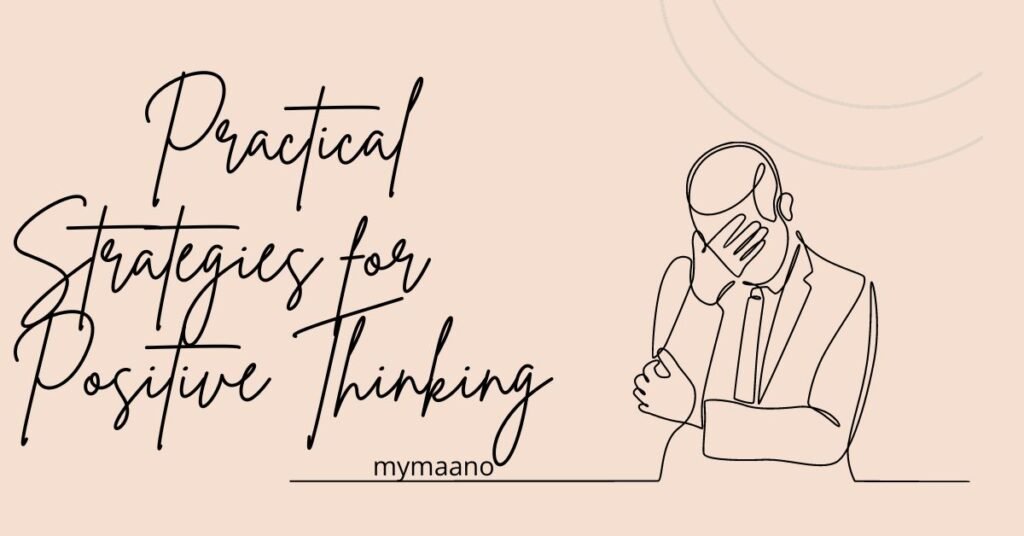Stress is an inevitable part of life, but how we respond to it can make all the difference in our well-being. One effective strategy for managing stress is harnessing the power of positive thinking. Let’s see what harnessing the power of positive thinking to reduce stress.
Understanding Positive Thinking
What Is Positive Thinking?
Positive thinking is a mental situation that focuses on situations’ constructive and optimistic aspects rather than dwelling on the negative. It involves consciously seeing the glass as half full rather than half empty.
The Impact of Negative Thinking on Stress

HARNESSING THE POWER OF POSITIVE THINKING TO REDUCE STRESS
Negative Thinking and Stress
When we consistently engage in negative thinking, it can lead to chronic stress. Negative thoughts often manifest as worry, self-doubt, and rumination, affecting mental and physical health.
Negative thinking patterns can also lead to a heightened stress response. When we perceive a situation as threatening or overwhelming, our bodies release stress hormones like cortisol, leading to increased heart rate, muscle tension, and other stress-related symptoms.
The Benefits of Positive Thinking
Positive Thinking and Stress Reduction
Positive thinking has a profound impact on our ability to manage stress. By cultivating a positive mindset, we can:
1. Reduce Anxiety
Positive thinking helps reduce Anxiety by focusing on solutions rather than problems. It encourages a sense of control and confidence in our ability to handle challenges.
2. Enhance Resilience
A positive mindset enhances Resilience, allowing us to bounce back more quickly from stressors. It enables us to adapt to change and view setbacks as opportunities for growth.
3. Improve Emotional Well-being
Positive thinking promotes emotional well-being by fostering Gratitude, contentment, and happiness. It can counteract feelings of sadness and depression.
4. Boost Immune Function
Research suggests that a positive outlook may strengthen the immune system, making us more resilient to illnesses that can be exacerbated by stress.
Practical Strategies for Positive Thinking

Now that we understand the benefits of positive thinking, let’s explore practical strategies for incorporating it into our daily lives:
1. Practice Gratitude
Take a moment each day to reflect on what you’re grateful for. This simple practice can change your focus from what’s lacking to what you have.
2. Challenge Negative Thoughts
When negative thoughts arise, challenge them. Ask yourself if they are based on reality or assumptions. Often, our worries are exaggerated or unfounded.
3. Cultivate a Positive Support System
Surround yourself with people who uplift and support you. Positive relationships can reinforce your optimistic outlook.
4. Mindfulness Meditation
Mindfulness meditation can assist you to stay present and reduce stress. It encourages acceptance of the present moment without judgment.
5. Positive Affirmations
Use positive affirmations to reframe your thoughts. Repeat statements like “I can handle this” or “I am resilient” when facing challenges.
6. Visualize Success
Visualizing Success can boost your confidence and motivation. Picture yourself overcoming barriers and achieving your goals.
7. Self-Compassion
Practice self-compassion by treating yourself with the same affection and understanding you would offer to a friend facing a similar situation.
8. Limit Negative Inputs
Reduce exposure to negative news or social media content that can fuel pessimism. Stay informed, but set boundaries for your mental well-being.
9. Seek Professional Help
If negative thinking patterns persist and significantly impact your life, consider seeking carry from a mental health professional. They can provide guidance and tools to cultivate positive thinking.
10. Focus on Solutions
When faced with challenges, shift your focus from the problem to potential solutions. Break down complex issues into manageable steps.
11. Embrace Failure as a Learning Opportunity
View failures as a chance to learn and grow rather than as insurmountable setbacks. Each Failure can bring you closer to Success.
12. Practice Self-Care
Engage in self-care activities that encourage relaxation and stress reduction. Whether reading, bathing, or spending time in nature, prioritize self-care regularly.
REFERENCES
READ MORE AT MYMAANO
<script async src="https://pagead2.googlesyndication.com/pagead/js/adsbygoogle.js?client=ca-pub-9874873739501890"
crossorigin="anonymous"></script>
